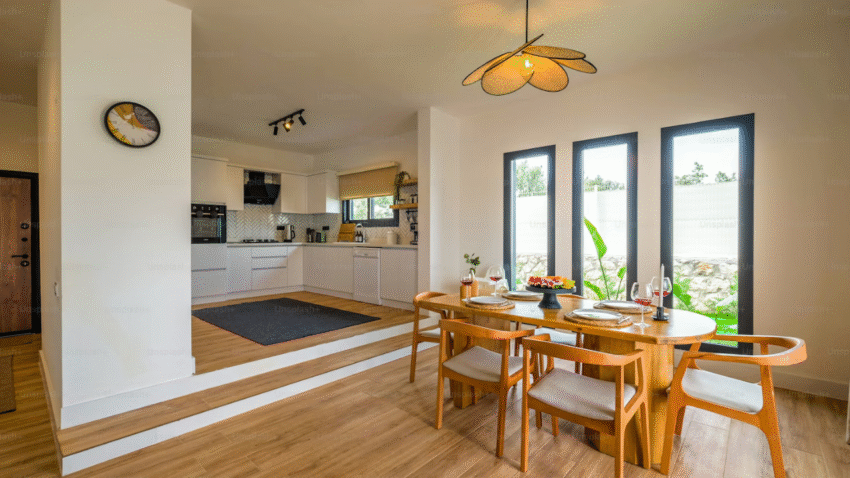Introduction
Ever ended up with mushy spaghetti or undercooked penne? The secret to perfect pasta lies in mastering al dente—an Italian term meaning “to the tooth.” Learning how to cook pasta al dente ensures that your noodles are firm, flavorful, and ideal for absorbing sauces. In this complete step-by-step guide, you’ll discover how to achieve that perfect bite every time, even without being a trained chef.
Why Cooking Pasta Al Dente Matters
Cooking pasta al dente does more than improve texture—it affects the entire dish. Overcooked pasta becomes gummy and breaks apart, while undercooked noodles can taste starchy and raw. Al dente pasta, on the other hand, provides a satisfying chew, holds its shape in sauces, and digests more slowly for better satiety.
This method is especially important when finishing pasta in a pan with sauce, where it continues to cook slightly. Al dente helps preserve the integrity of the noodle, whether you’re preparing a hearty Bolognese, a creamy Alfredo, or a light pesto dish.
Achieving al dente perfection is about timing, observation, and knowing your pasta type—skills that any home cook can master.
Step-by-Step Guide to Cooking Pasta Al Dente
1. Choose the Right Pasta
Whether you’re using spaghetti, fettuccine, rigatoni, or farfalle, each shape may have a slightly different cook time. Always check the package instructions for recommended times—but keep in mind that al dente is usually 1 to 2 minutes less than the full cooking time listed.
Tip: Dry pasta tends to require longer cooking than fresh pasta. For al dente, aim to undercook slightly from the printed time.
2. Boil Plenty of Water
Fill a large pot with water—use about 4 to 6 quarts per pound of pasta. More water allows the noodles to move freely and prevents sticking.
Place the pot on high heat and cover with a lid to bring it to a rolling boil faster.
3. Salt the Water Generously
Once boiling, add salt. Use about 1 to 1½ tablespoons of salt per 4 quarts of water. It should taste like seawater.
Kitchen Tip: Salting the water is essential for flavor; it’s the only opportunity to season the pasta from the inside out.
4. Add the Pasta and Stir Immediately
Drop in your pasta and give it a quick stir with a long spoon or tongs to prevent clumping or sticking to the bottom of the pot.
Leave the lid off while cooking to avoid foam overflow.
5. Monitor the Time
Set a timer for 2 minutes less than the package’s recommended cooking time. This gives you a window to check for doneness before it’s overcooked.
For example:
- Spaghetti: 8–10 minutes → check at 6–7 minutes
- Penne: 10–12 minutes → check at 8–9 minutes
- Fettuccine: 11–13 minutes → check at 9–10 minutes
6. Test the Pasta
Use a slotted spoon or tongs to remove a single noodle. Let it cool for a second, then take a bite.
What to look for: The pasta should be mostly tender but have a firm, slightly resistant core in the center—this is al dente.
Tip: Break a noodle in half—look for a thin white dot or line in the center. That’s your al dente sweet spot.
7. Reserve Pasta Water (Optional but Smart)
Before draining, scoop out a cup of pasta water. This starchy liquid is perfect for helping sauces cling to noodles later.
8. Drain Quickly (Don’t Rinse!)
Drain the pasta in a colander as soon as it hits the al dente point. Never rinse—rinsing removes surface starch that helps sauces stick.
Exception: If you’re using pasta for a cold salad, rinsing is okay to stop the cooking process and cool the noodles.
9. Combine with Sauce Immediately
For best results, add the pasta straight into your simmering sauce and toss for 1–2 minutes. This allows the pasta to finish cooking slightly and absorb flavors.
Common Mistakes to Avoid
Mistake 1: Not Tasting for Doneness
Relying only on time is risky.
Solution: Always taste the pasta to feel the firmness before draining.
Mistake 2: Not Using Enough Water
Crowded pasta leads to uneven cooking.
Solution: Use a large pot with at least 4 quarts of water per pound of pasta.
Mistake 3: Skipping the Salt
Unseasoned pasta tastes bland, no matter how good your sauce is.
Solution: Salt the water generously once it reaches a boil.
Mistake 4: Rinsing Pasta After Cooking
Rinsing washes away starch and flavor.
Solution: Only rinse if making pasta salad; otherwise, skip it.
Mistake 5: Letting Pasta Sit After Draining
Sitting pasta sticks together and cools off.
Solution: Toss it with sauce or a drizzle of olive oil immediately after draining.
Extra Tips & Kitchen Hacks
Use a Pasta Fork or Spider
These tools help scoop pasta directly from water into sauce—no draining needed and ideal for finishing in the pan.
Finish in the Sauce
After cooking to al dente, finish the pasta in the pan with sauce for 1–2 minutes. Add reserved pasta water to create a silky texture and help the sauce cling.
Remember Different Shapes, Different Times
Shorter shapes like macaroni cook faster than longer ones like linguine. Get to know the cook time ranges for your favorites.
Related Task: Once you’ve mastered al dente pasta, try making homemade tomato sauce or pesto from scratch to elevate your dish even more.
Conclusion
Cooking pasta al dente is a skill that instantly improves your meals. With the right water, salt, timing, and a few taste tests, you can hit that perfect texture every time. Whether you’re prepping a quick weeknight dinner or an Italian feast, al dente noodles make all the difference.
One final tip: Keep experimenting with different pasta shapes and sauces, and trust your taste buds over the timer. Bookmark this guide to always nail that perfect pasta bite!
